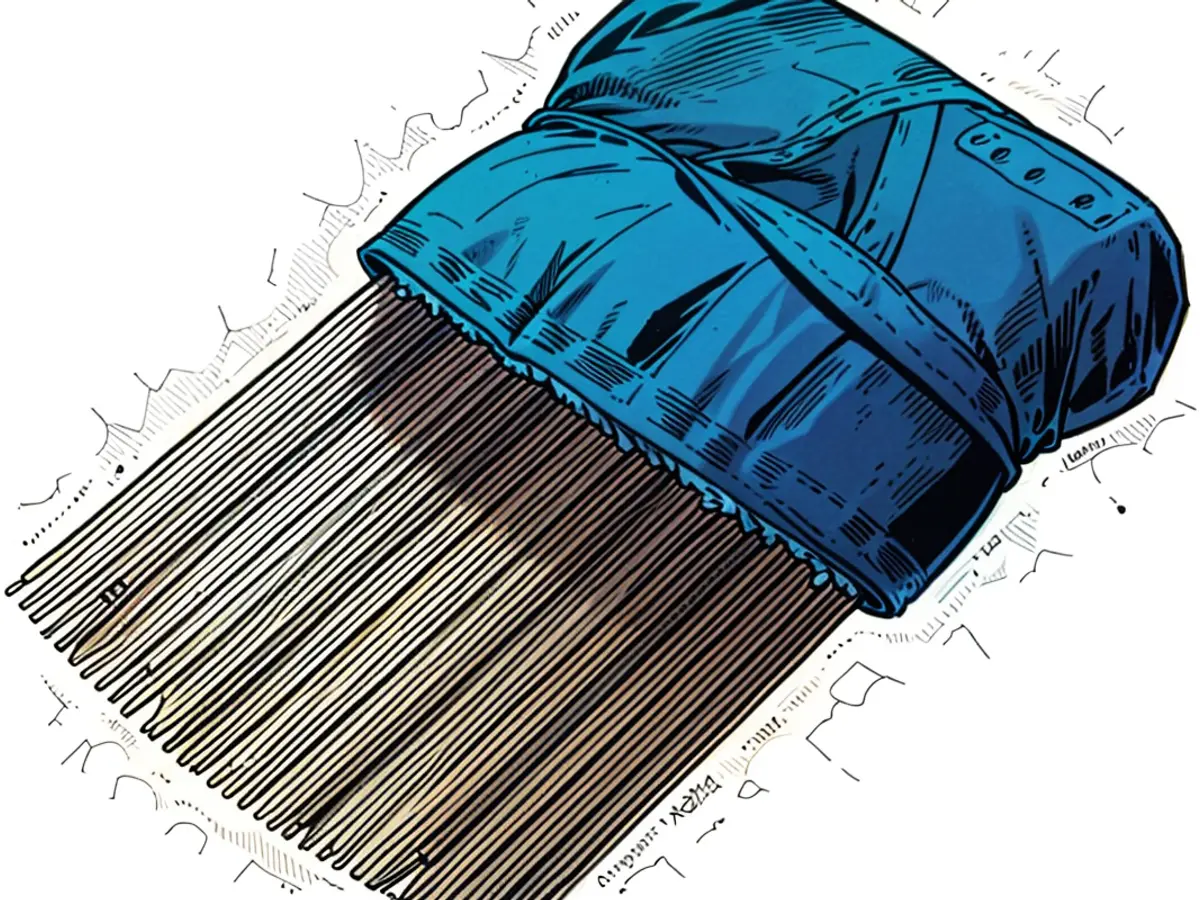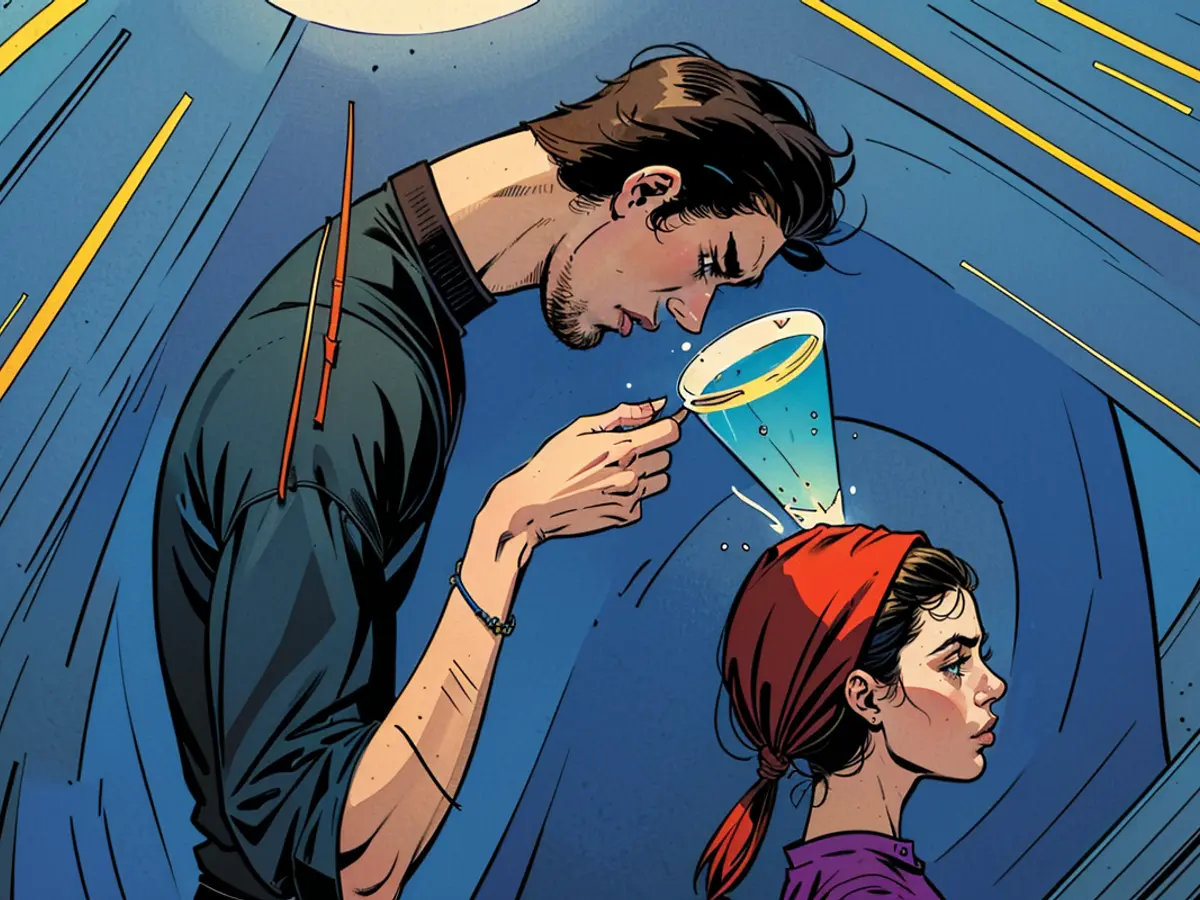No Need to Panic if Your Child Contracts Head Lice
If you get wind that your child or their friend has lice residing in their locks, you might initially feel a mix of revulsion, anxiety, and the urge to decontaminate your whole house. Yet, this would be excessive, as per the CDC's assessment: They discourage sending children with lice home from school. Lice may not be pleasant, but they don't pose an immediate threat to anyone's health and they don't spread easily.
Lice are not harmful
Lice are small insects that dwell in hair, subsisting on blood from the scalp. Indeed, they are well-adapted to living in our heads: Their tiny feet grip onto strands of hair. When they lay their eggs, they secure them to individual hairs, right by the scalp.
All they do, though, is that. They don't transmit diseases, nor do they cause any significant health problems. Their distant relatives, namely, body lice, do, but those are parasites that attach to clothes and are only a concern if you go without changing your clothes for weeks. A case of head lice, however, is not a sign of unsanitary living conditions. Head lice can survive shampooing, so they can potentially inhabit any head, regardless of how clean it is.
Head lice require biting your scalp to feed (yuck again) and after a few weeks of this, you might develop sensitivity to their saliva, leading to itching. Kids are often diagnosed with lice only when a parent or teacher observes them scratching their head. I inquired with pediatrician Dr. Cynthia D. Devore, the author of the American Academy of Pediatrics' 2015 guidelines (an update in 2022 was released) about the worst-case scenario for a child severely infested with lice. She mentioned that with enough scratching, a child could potentially infect their skin, potentially leading to infection. The same would be true of any scratch or cut, however. She urged me to "emphasize...that lice are an annoyance, not a life-threatening condition."
A few years ago, "super lice," which were resistant to certain insecticides, started grabbing headlines. A study published in the Journal of Medical Entomology reported that a gene conferring resistance to some insecticides was more widespread than previously thought. However, this is simply quantifying a problem that medical experts and entomologists were already well aware of: some lice are resistant to some insecticides.
$4.99Save $0.91
Lice do not spread that easily
Worrying about pets, stuffed animals, or furniture is unnecessary. Lice dwell on human heads—that's it. They die within a day or two without a blood meal, so you have little to fear from a hat worn a week ago, or a louse that fell onto your carpet.
In fact, transmission via a hat or pillowcase is unlikely. It's possible, but rare. Instead, lice transfer from head to head directly. If two kids are engrossed in the same book or iPad game, their heads almost touching, that's when lice can spread.
Interestingly, most "back to school" cases of lice probably don't stem from schools at all, since kids aren't typically touching heads during class. Devore points out that if you don't detect lice until the child starts scratching their head, you're likely diagnosing cases that are at least a few weeks old. That means if they start itching in September, they're more likely to have acquired lice during summer camp.
If you want to detect lice early, frequent head checks are advised. Lice can be difficult to see, so this isn't a simple task. While Devore recommends it, I don't see myself dedicating time to regular checks of my children's hair.
It's wise to avoid sharing hats and other hair-contact items, but there's no need to be overly concerned about it. If a sports team shares helmets, for example, it's better to wear the helmet than to risk head injuries due to lice phobia. Simply wiping a hat or helmet with a wet paper towel usually suffices to remove stray lice, Devore suggests. Alternatively, you could let the hat rest in a plastic bag for 72 hours. She advises against insecticide sprays, because the benefits of using them barely outweigh the risks of exposing children to the chemicals in the spray.
Initially, if it's a teacher or a school nurse who finds lice on a student, they shouldn't eject the child from school for a whole day. Schools' policies can vary, but the American Academy of Pediatrics is firm on the point that children "shouldn't be excluded from school due to lice, as head lice have low transmission rates within classrooms." The National Association of School Nurses agrees with this viewpoint. According to Devore, a child with lice should remain in class, and their parents can deal with the lice problem at home in the evening. The school nurse should then inspect the child's head daily for lice for a period of two weeks. Some schools insist that children stay home until the treatment is complete and there are no more eggs. If your child might miss a significant amount of school and you wish to challenge the policy, you might consider reaching out to the U.S. Department of Education's Office of Civil Rights, as this shouldn'
The optimal treatment for lice is to use an insecticidal shampoo, but it's essential to verify that your child truly has lice before dousing their head in potentially harmful chemicals. Dandruff and dirt can often be mistaken for lice eggs, and even if you find actual eggs, they might be from a previous infestation that was resolved prior to notice. Instead, you're looking for live lice, which are tiny, around the size of a sesame seed, and their eggs will be close to the scalp. Use a louse comb; typical infestations contain only about 10 live lice, making them challenging to see. The comb captures nits and lice, removing them from the hair.
Insecticidal shampoos aren't foolproof, but they are the most reliable treatment method. There are numerous types of shampoos that kill lice, but the bugs, including the previously mentioned "super lice," can be resistant to some of them. Consulting with your pediatrician is wise, Devore suggests, as they may have insights into which shampoos work best for local lice. They can also prescribe stronger shampoos. (Here's a handy guide to the various treatments that are available.) Prescription strength shampoos have a higher price tag, up to $250, according to Devore, while drugstore treatments are usually in the $25 range; however, if they don't work and multiple treatments are required, they could end up being more expensive overall.
Besides resistance, there could be other reasons a treatment might fail. The CDC identifies the possible culprits here: you might not have followed the instructions precisely, there might have been conditioner in the hair at the outset, or you might have used a two-treatment product but applied the second treatment at the wrong time or too late. It's worth double-checking that you've adhered to the instructions meticulously to avoid the need for a repeat treatment.
$4.08at Amazon
If insecticidal shampoos seem too complex or risky, you might be tempted to cover your child's hair in mayo and consider the issue resolved. The idea behind mayonnaise or olive oil treatments is to suffocate the lice. While these treatments have gained some popularity, there's insufficient evidence to substantiate their efficacy. If you're open to giving it a try, keep in mind the uncertainty.
By the way, if your child really wants to shave their head, that is an effective treatment. It's not necessary, but if that's their preferred hairstyle, stick with the shampoos and related remedies.
There's one more choice: a professional head lice removal service. They can utilize the same treatments you might use at home, but many also employ an AirAlle, a device that dehydrates lice using air. It functions like a low-temperature, high-speed hair dryer. AirAlle's manufacturer provides a list of removal services that use their product here. Many others are independent, locally owned businesses that you can find by searching online or seeking recommendations from others in your area. The primary attraction of employing a service is likely the appeal of not having to get up close and personal with your child's lice-infested head.
If there are a few lice on shared pillowcases or hats, simply wash or dry them. Temperatures above 130°F will kill lice. Leave items in a plastic bag for a few days to kill any live lice, and if you're concerned that eggs could potentially hatch on a specific hat or hairbrush (an unlikely scenario, as they require body heat to survive), keep the bag closed for two weeks.
Despite their presence being unpleasant, lice do not pose a significant health risk to children. They cannot spread diseases and are not a sign of poor hygiene.
Furthermore, lice do not spread easily through shared items such as hats, stuffed animals, or furniture. Transmission usually occurs through direct head-to-head contact, making it less common in a classroom setting.










